It’s been a fast and furious spring here in south-central Illinois. The first half of April was a wash and what seemed to be an endless pattern of heavy rains and cold weather. The sun finally came out to play. It didn’t take too many 20-hour days, and before I knew it, all the ammonia was on and 90 percent of the corn and soybeans were planted in about 12-days. But as the dust settles, it still amazes me how quickly we can put in our crop.
As we park the planters for the year, the sprayers will start rolling down the road in what seems to be a relentless battle against weeds. To help prepare yourself, it is important to know what weed species you will be targeting in your field.
Below are the 5 most troublesome broadleaf weed species in Illinois, and how to properly identify them in the seedling stage.
Common Waterhemp (Amaranthus rudis)
Common waterhemp is more than likely the most troublesome broadleaf weed across the state. Some populations of this weed are resistant to multiple herbicide modes of action, which makes it exceedingly difficult to control, post-emergence. Waterhemp is a summer annual species that reproduces dioeciously, meaning it has separate male and female plants.
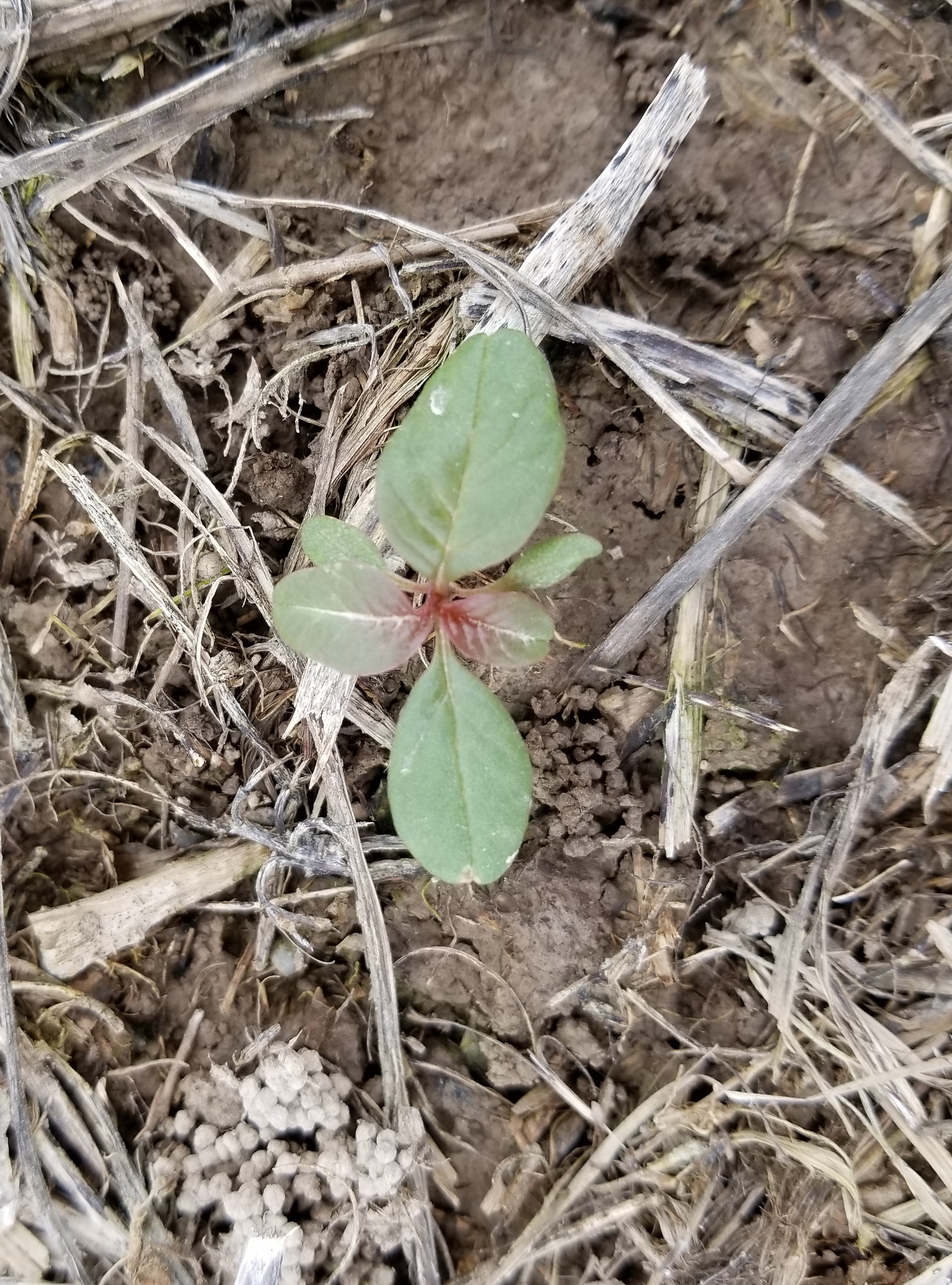
Key identifying features:
- Slender and erect seedling with green or reddish foliage (females are usually red)
- Leaves are alternate in arrangement and leaf blades are highly variable in shape from ovate or lanceolate to spatulate or oblong
- Stems are almost always lacking pubescence
- Fibrous roots come from a well-developed taproot
- Peak germination is from mid-May thru late July
Canadian Horseweed (Conyza canadensis)
Horseweed, most commonly referred to as marestail, is an erect annual species that until recently has been off our radar as a troublesome weed in Illinois soybean fields. Like our number one weed on our list, horseweed has become resistant to several herbicide modes of action, the most widespread population being the ALS resistant biotype. No-till farmers especially have problems with horseweed due to its deep established taproot. Although we may see it as a weed, early American settlers used it to treat diarrhea and dysentery.
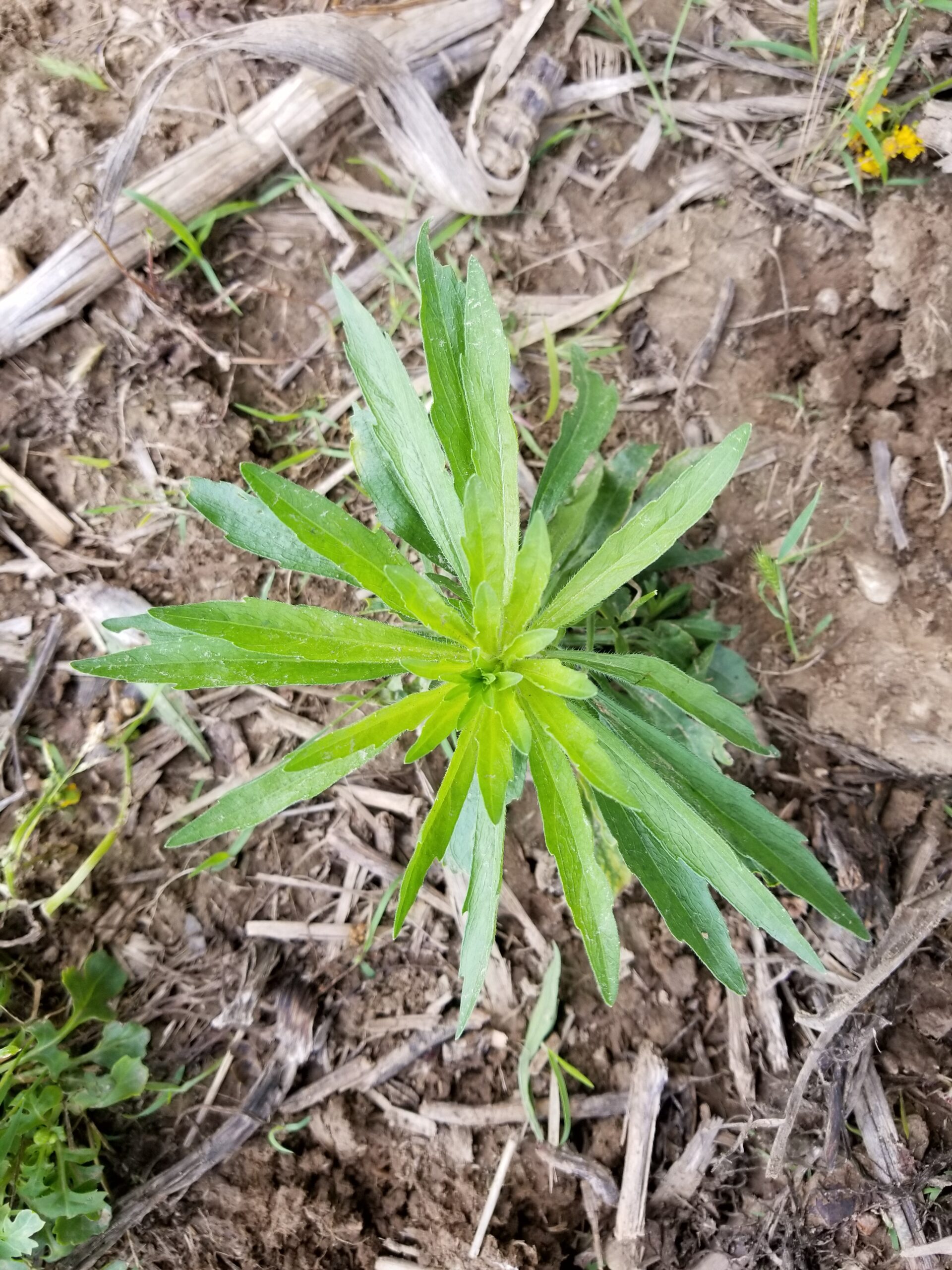
Key identifying features:
- Erect and simple stem that is unbranched, grows from a “basal rosette”
- Leaves are alternate in arrangement and crowed in large numbers along the stem
- Leaf margins enter “sawtooth” pattern
- Stems are bristly in texture
- Fibrous roots come from a well-established taproot system
Giant Ragweed (Ambrosia trifida)
Most farmers in Illinois know this weed as horseweed. My weed science professor at Western Illinois University was convinced that if it grew larger than the crop and you couldn’t kill it, it was then a horseweed. However giant ragweed, if established can be one of the largest yield robbing weeds in soybeans, due to its large stature and highly competitive root system. Many herbicides are still effective on giant ragweed when targeted early. Although the violet is officially Illinois’ state flower, I believe giant ragweed could replace it.
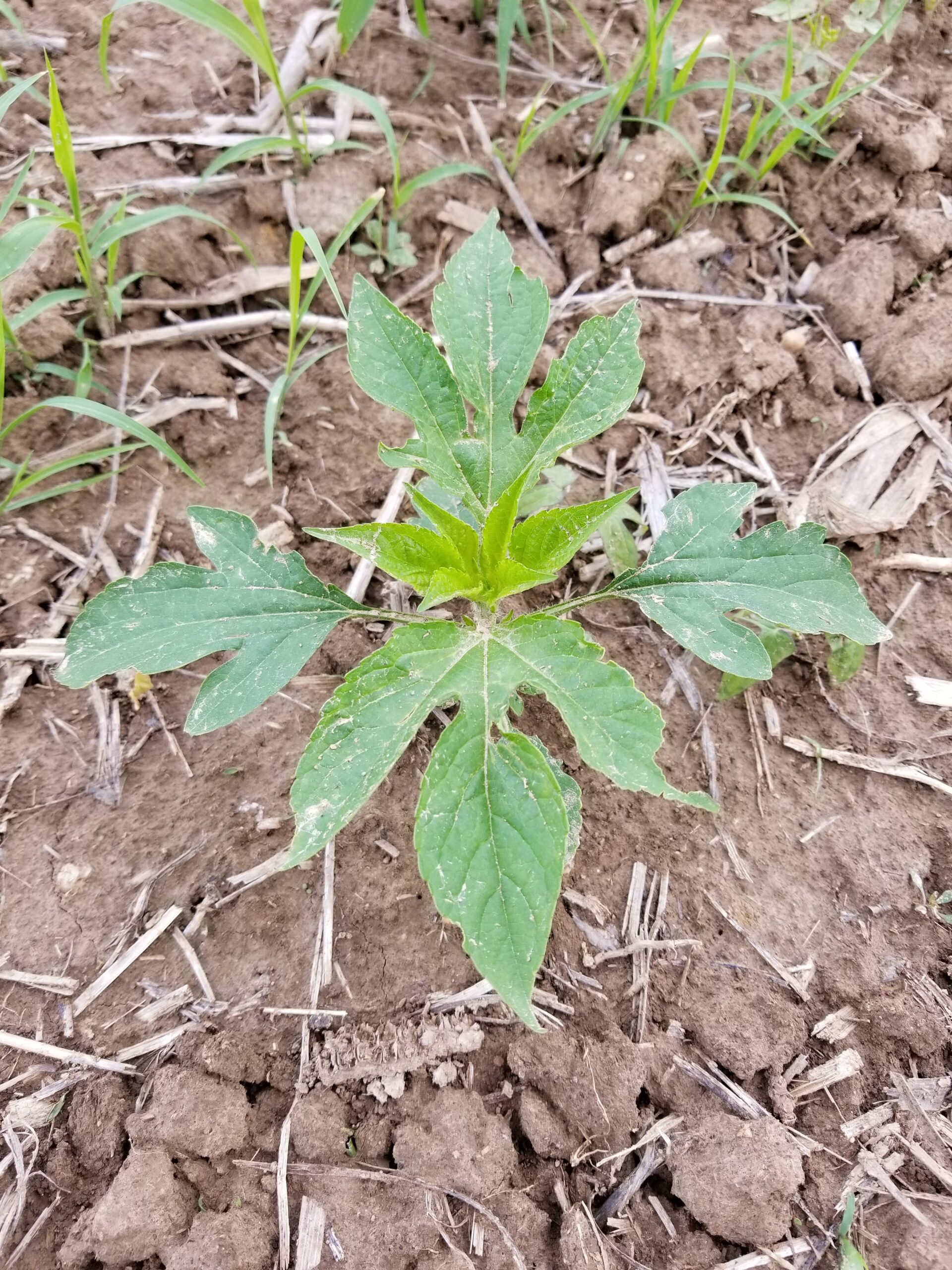
Key identifying features:
- Cotyledons are round to oblong and thick
- Young leaves are opposite in arrangement and have rough hairs
- The first pair of leaves is unlobed and are ovate to lanceolate
- Subsequent leaves usually have three large lobes (hence the name trifida)
- When leaves are unlobed, it can resemble common cocklebur
Ivy-leaf Morning Glory (Ipomea hederacea)
It’s easy to get tangled up in this weed. There are several species of morning glories, but from my experience ivy-leaf is the most common throughout Illinois. A summer annual large seeded broadleaf, ivy-leaf morning glory is most problematic along field edges and waste areas. While not a large shading plant, it can be problematic at harvest time due to its vine-like growth habit. Most herbicides are effective on this weed. However, I have seen its sensitivity to glyphosate decrease over the past several years.
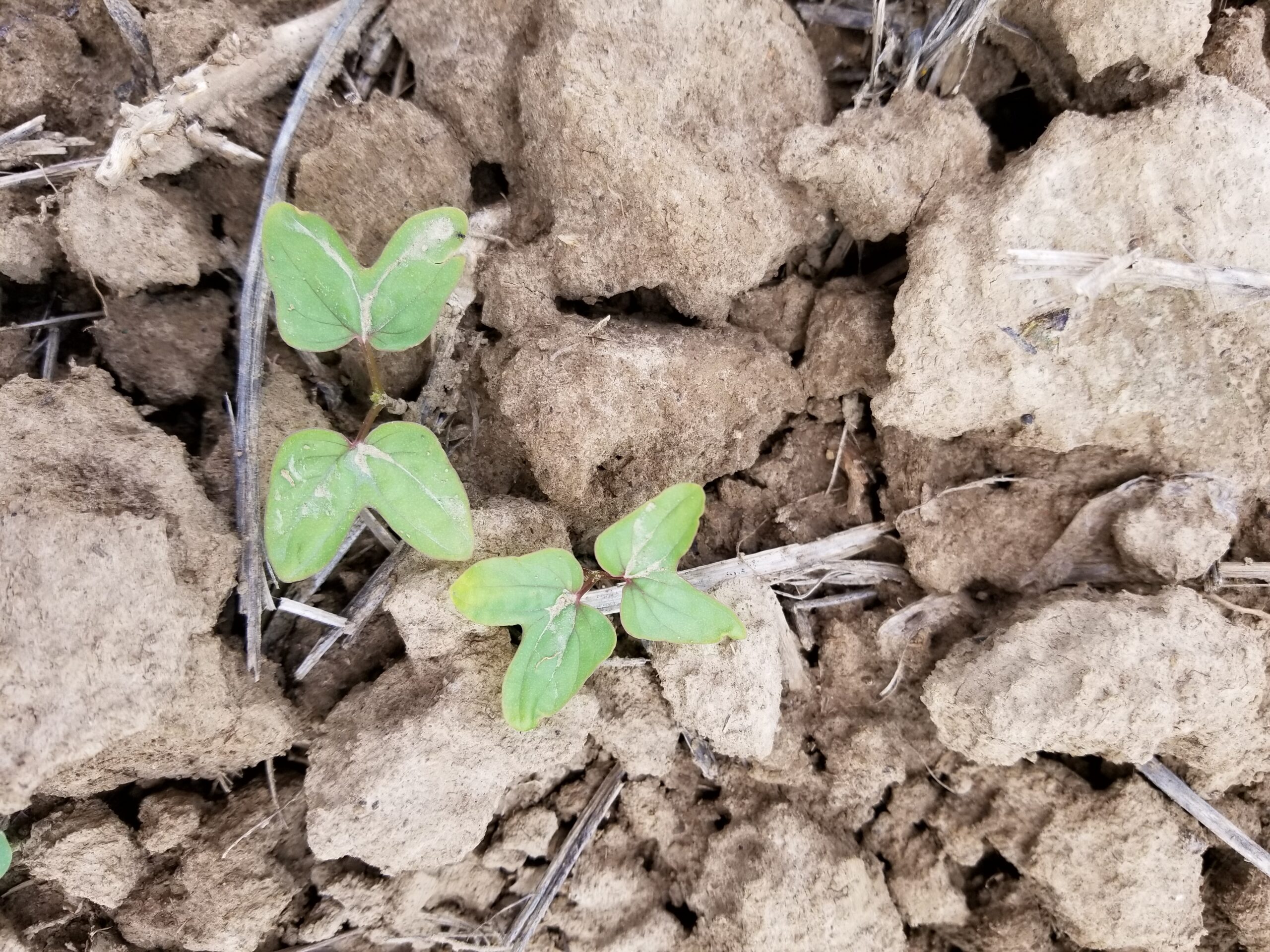
Key identifying features:
- Cotyledons are butterfly-shaped and deeply notched at the apex
- Upper surfaces of the cotyledons are green, with translucent glands
- First leaf is unlobed, with subsequent leaves being ivy-shaped
- Hypocotyls are maroon colored at the base
- Roots are coarsely branched
- Stems and leaves are densely hairy
Common Cocklebur (Xanthium strumarium)
Almost everyone has had an experience with the little spinney seeds from the common cocklebur. You can thank this weed for the invention of Velcro, as it was the inspiration. Nevertheless, cockleburs are prevalent in Illinois soybean fields, and when left untreated can significantly impact yield. This weed prefers well drained soils but will grow almost anywhere.
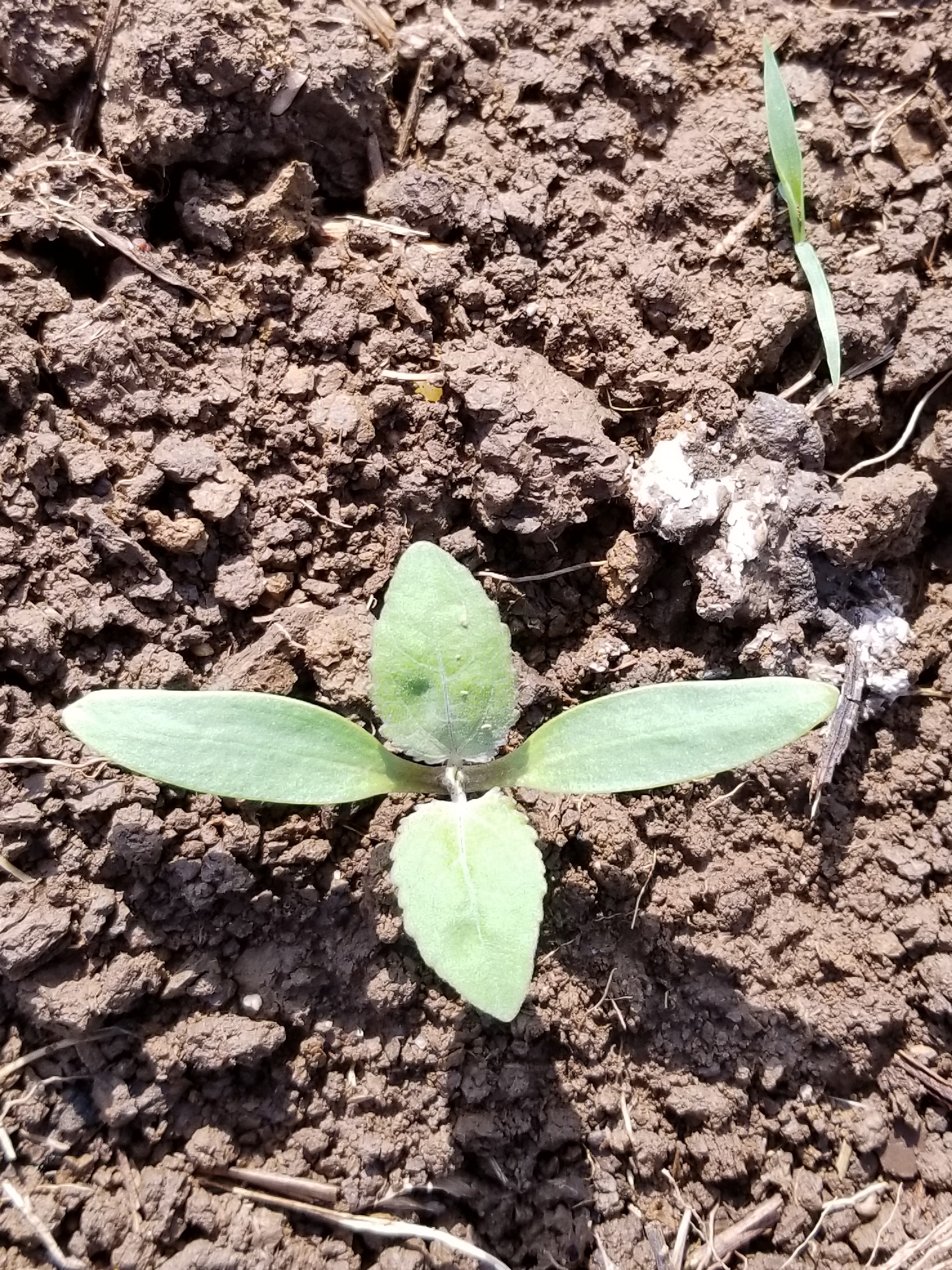
Key identifying features:
- Hypocotyls are stout and purple towards the base
- Spiny burr remains underground at the base of the hypocotyl
- Cotyledons are thick and fleshy, lanceolate in shape and tapered at both ends
- First pair of leaves are opposite in arrangement, subsequent leaves are alternate
- Leaf surface is rough with short stiff hairs
- Stems are a light green with purple to brown spots
If you have any questions on weed identification, please feel free to contact Aaron Prins.
*Note: All photos in this article were taken in Bond, Fayette and Effingham counties.






 and then
and then